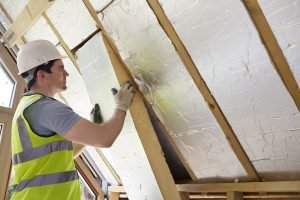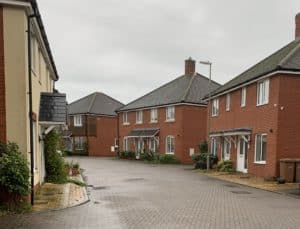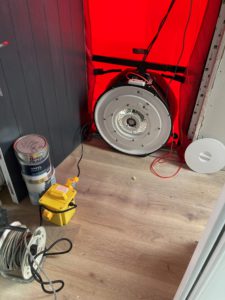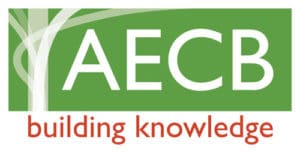Achieving Net Zero in homes isn’t just about grand design gestures or futuristic innovations. It also depends on the quiet heroes: the products we specify every day. From windows to heat pumps, getting these choices right is what transforms a good building into a truly low-carbon, high-performing one. So, what are the best-in-class products helping homes slash their energy use and maximise renewable energy? Let’s take a tour.
Windows.
All windows are not created equal. While two units may look the same from the outside, their performance can differ wildly under the surface. For a high-performance, Net Zero-ready window, look for:
- Whole window U-values of <1.4 W/m2K for double glazing or <0.85 W/m2K for triple glazing.
- Timber or timber-aluminium frames for a balance of insulation and durability.
- Minimal framing, reducing thermal bridging and maximising daylight.
- Airtight seals with multi-point locking systems and Class 4 air permeability ratings.
The key is in the detail. A stunning picture window means little if it leaks heat like a sieve.
RELATED: HOW TO INSTALL THE MOST ENERGY EFFICIENT WINDOWS FOR YOUR HOME.
Doors.
A well-insulated front door is just as crucial as any other part of the thermal envelope. The best Net Zero-ready doors should offer:
- U-values of 1.0 W/m2K or better.
- High airtightness ratings, essential for stopping draughts in their tracks.
- Low embodied carbon materials that don’t compromise on security.
If your door is glazed, make sure the glass performance supports solar gains and insulation – both U-value and g-value matter here.
Insulation.
When it comes to cutting heat loss, insulation does the heavy lifting. The right insulation product depends on where it’s being used:
- Thermal conductivity should be as low as possible.
- Material choice must reflect the building type: vapour-permeable for heritage, rigid boards for floors, or compressive strength where needed.
- Fire rating, embodied carbon, and moisture control all play critical roles.
Remember: not all insulation is going to keep your building snug and sustainable. Get it wrong, and your airtight home could still suffer from thermal bridges or internal moisture issues.
PIN FOR LATER: WHAT IS GRASS INSULATION?
AND
BLOW-IN CELLULOSE INSULATION | A GUIDE
Airtightness products.
Net Zero buildings are nothing without airtightness. Whether you’re dealing with a timber frame, blockwork or retrofit plaster layer, your airtight strategy should include:
- Specialist airtight tapes: fleece-backed for plastering, double-sided for junctions, and purpose-made for long-term durability.
- Airtight OSB boards and membranes for timber structures.
- Grommets for services: fast to install and far more reliable than improvised sealing.
A word to the wise: never substitute these with generic construction tapes. It’s a false economy you’ll regret.
Ventilation with heat recovery (MVHR).
MVHR systems are a game changer for energy-efficient homes. But not all systems work in the same way. Look for:
- Heat recovery efficiency of at least 90%
- Specific fan power (SFP) <0.9 W/l/s for energy savings
- Low noise levels (target NR25 near living spaces)
- Summer bypass for passive cooling
- Passivhaus certification as a mark of quality
A good MVHR system will keep your home fresh and warm with minimal energy use.
Waste water heat recovery (WWHR).
WWHR systems recover heat from your shower water before it goes down the drain. Sleek, smart, and surprisingly simple, they can:
- Recover over 55% of waste heat (for vertical systems)
- Integrate into new builds or retrofits, so long as pipe access is available
It’s invisible energy efficiency that can quietly shave a chunk off your hot water bills.
YOU MAY LIKE: WHAT IS A WASTE WATER HEAT RECOVERY SYSTEM?
Heat pumps.
Whether air source or ground source, heat pumps are the future of heating. Choosing the right one means considering:
- Sizing: match max and min heating capacity to the home’s demand
- CoP and SCoP: look for systems with high seasonal efficiency
- Low flow temperatures: underfloor heating helps boost performance
- Maintenance and warranty: a solid 5-10 year cover is key
Air source heat pumps are easier to retrofit and install; ground source systems offer higher efficiency but require space or borehole drilling. Both can cut carbon and costs if installed and designed well.
READ NEXT: WHAT ARE THE MOST ECO-FRIENDLY HEATING OPTIONS?
Solar PV panels.
Solar PV has gone mainstream, and modern panels are more powerful and reliable than ever. For maximum performance:
- Choose monocrystalline panels with at least 360W output
- Opt for microinverters to improve yield and longevity
- Think twice about batteries; they may not pay off unless paired with solar hot water, EV charging or smart controls
Solar is often the final piece of the Net Zero puzzle, and with competitive warranties, it’s a long-term performer.
What do the experts think?
Andrew Sadler, Director of Buildpass, said:
“So many people focus on the big-ticket items like heat pumps and solar panels, but if you don’t get the basics right – like good windows, quality insulation, or airtightness detailing – you’re leaving performance on the table.
“Net Zero isn’t about silver bullets. It’s about stacking smart product choices that, together, create a high-performance home. Every product has a part to play, and when you specify carefully, you get a house that works with the climate – not against it.”
So, what makes a product Net Zero-ready?
It’s not just about ticking boxes. A true Net Zero product works hard on multiple fronts: high performance, low embodied carbon, airtightness, and durability. It’s about stacking small decisions that, together, make a massive difference. And that’s exactly where the magic of Net Zero design lies.
If you’re not sure where to start, or need help specifying the best product mix for your project, get in touch with the Buildpass team. We’ll help you make low-energy, high-performance design the norm – not the exception.




















